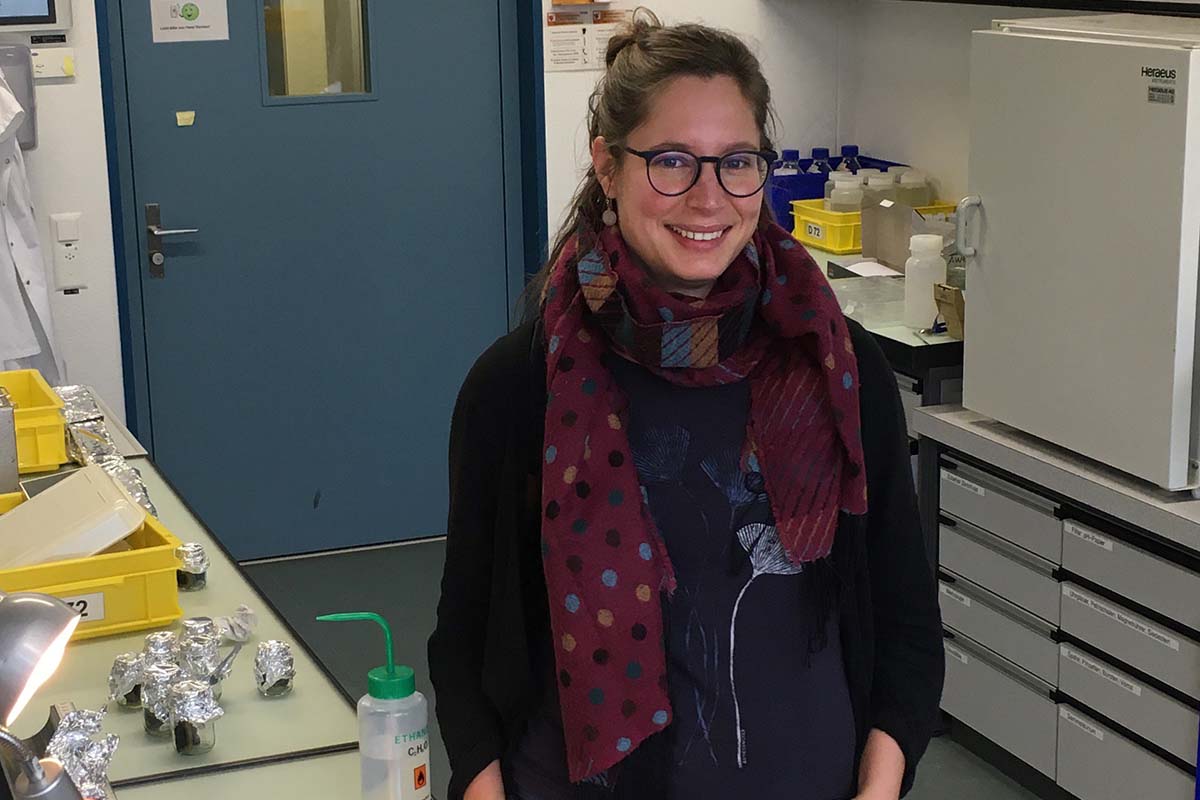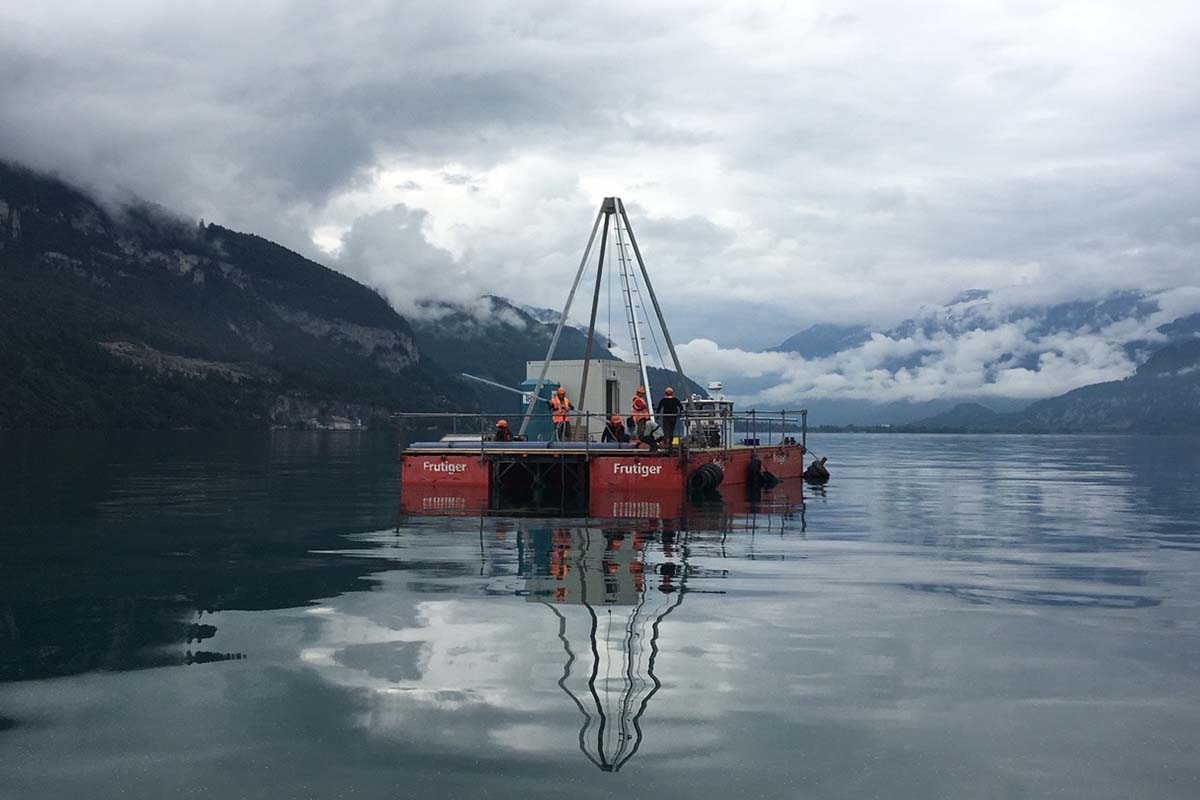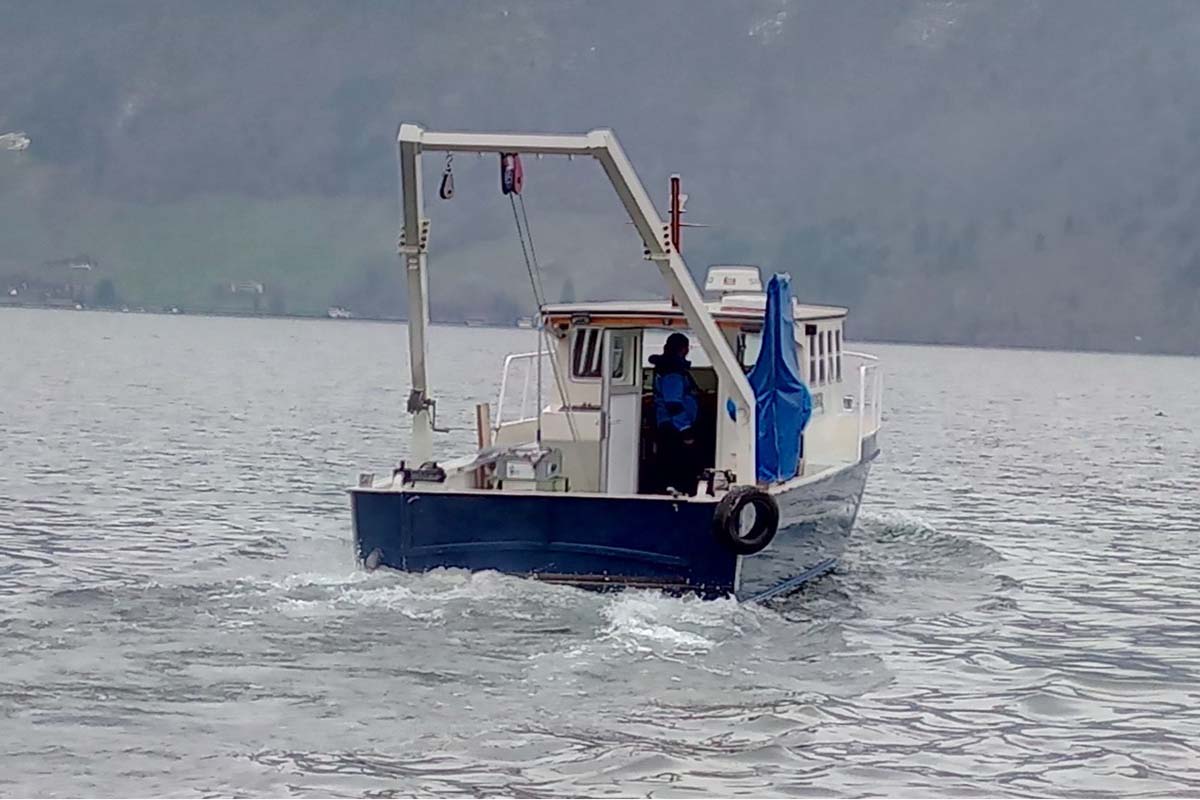Tracking tsunamis in Switzerland
Katrina Kremer is studying underwater landslides in lake deltas to draw conclusions about the processes that can lead to tsunamis even in Swiss lakes. As the processes are similar to those of marine systems, the findings could also be applied to coastal warning systems.
The funding instruments Eccellenza and PRIMA of the Swiss National Science Foundation SNSF enable highly qualified researchers to implement their projects within the framework of an assistant professorship at a Swiss university. In a series of interviews, we present six newly awarded researchers and their projects.

You have received a "PRIMA Grant" from the Swiss National Science Foundation SNSF. What does it mean to you to receive this Fellowship?
The PRIMA Grant gives me the opportunity to develop my own research area, to set up my own research group and, above all, to continue to conduct independent research. The grant also allows me to act as a role model for my children, but also for young researchers, where I can show that family and scientific careers are not mutually exclusive.
You have been selected from the SNF for your research project « Slope failures in sublacustrine deltas ». What is the project about?
In this project, I am studying underwater landslides in deltas. These underwater landslides can trigger tsunamis if they mobilize large volumes of sediment and move quickly. Even in lakes! A historical example in Switzerland is the 1687 Muota delta failure in Lake Lucerne, where a wave of up to four meters in height was documented. However, due to the high level of particle load of rivers, the traces of these events are quickly obliterated. That’s why we miss information to better understand these landslides and the resulting hazard. In this project, we will combine different methods to “observe” the underwater processes to constrain the missing elements.

What made you chose the University of Bern for your Project?
At the University of Bern, there is already a very active research group in lake research. Colleagues at the Institute of Geological Sciences here, as well as at my host institute at EAWAG, have been very supportive from the beginning. In addition, important infrastructure and equipment that I need to carry out my project is already existing in Bern. Furthermore, being based in Bern allows me to continue living with my family in Zurich, where my children go to school.

What is the social relevance of your project?
The findings from this project will help to better understand the potential hazard related to waves caused by underwater landslides in deltas.
Since lakes are smaller and more accessible than marine systems, but the process is similar, the knowledge gained in this project might be transferrable to oceans.
About Katrina Kremer
Dr. Katrina Kremer studied geosciences in Göttingen from 2004 to 2009. She moved to Geneva for her PhD in 2010 and obtained her doctorate in 2014. She then worked as a postdoc, initially at the Geological Institute (2014-2016), then as a postdoc/senior researcher at the Swiss Seismological Service (2016-2022) at ETH Zurich. Her research was funded by, among others, a Marie-Heim-Vögtlin grant from the SNSF (2017-2019). From June 2022, Katrina Kremer will work as an assistant professor (SNSF PRIMA) at the Institute of Geological Sciences of the University of Bern. She is particularly interested in lake sediments and the story they tell us in terms of natural hazards (e.g. landslides, earthquakes, tsunamis, etc.), but also in terms of the impact of humans on the environment (e.g. microplastic pollution).
SNSF PRIMA
PRIMA grants are aimed at excellent women researchers who show a high potential for obtaining a professorship. PRIMA grantees conduct an independent research project with their own team at least at the group leader level within a Swiss research institution. PRIMA grants cover the grantee's salary and project costs for a five-year period. With this competitive grant, PRIMA grantees can carve out a name for themselves and take the next step up the academic career ladder: a professorship. If a PRIMA grantee is appointed as a professor in Switzerland during the funding period, the remaining amount of the PRIMA grant will be transferred to the new place of work as research funds. In 2021, the PRIMA program selected two researchers at the University of Bern.
SNSF Eccellenza Professorial Fellowships
SNSF Eccellenza Professorial Fellowships are aimed at highly qualified researchers who aspire to a permanent professorship. Eccellenza supports them in achieving their goal by allowing them to lead a generously funded research project as an assistant professor with their team at a Swiss higher education institution. Eccellenza covers the grantee's salary at the local rates applicable to assistant professorships and project funds of up to 1,000,000 Swiss francs for a five-year period. In 2021, the Eccellenza program selected four researchers at the University of Bern.
About the author
Maura Widmer is an intern at the Communication & Marketing Department of the University of Bern.